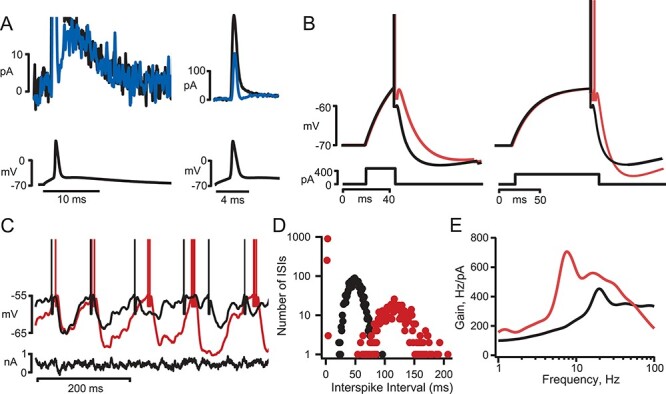Figure 10 .

Implementation of a simplified model neuron that captures Kv2 channel control of bursting in Thy1 neurons. (A) Average current (upper traces) obtained from outside-out macropatches pulled from the soma of three Thy1 neurons. The voltage command (lower traces) was a previously recorded action potential evoked by 2-ms pulses (from a previous whole-cell recording from the soma of a Thy1 neuron as in Figure 5). The total evoked K+-current in control solution (black) is superimposed on the difference current after GTx application (blue is control minus GTx, i.e., the current attributable to Kv2 channels, average from three neurons). While Kv2 current accounted for less than half of the total K current during the AP, it accounted for essentially all of the K+ current during the fAHP (The bath included 0.5 μM TTX and 400 μM Cd2+ to block voltage-gated Na+ and Ca2+ channels, respectively). (B) Voltage response of the model neuron to depolarizing current pulses with (black) and without Kv2-like conductance (red). (C) Voltage response of the model neuron to a noisy current step with (black) and without Kv2-like conductance (red). (D) ISI histogram (note that the y-axis is plotted on a log scale) for the model neuron during a 10-s noisy current step (black, with Kv2 conductance, red, without Kv2). The mean firing rate was maintained at ~20 Hz by adjusting the DC level of the current step (665 pA with Kv2; 450 pA without Kv2, the standard deviation of the noise was 200 pA in both cases). (E) Plot of firing gain as a function of input frequency for the model neuron responses used for D.
